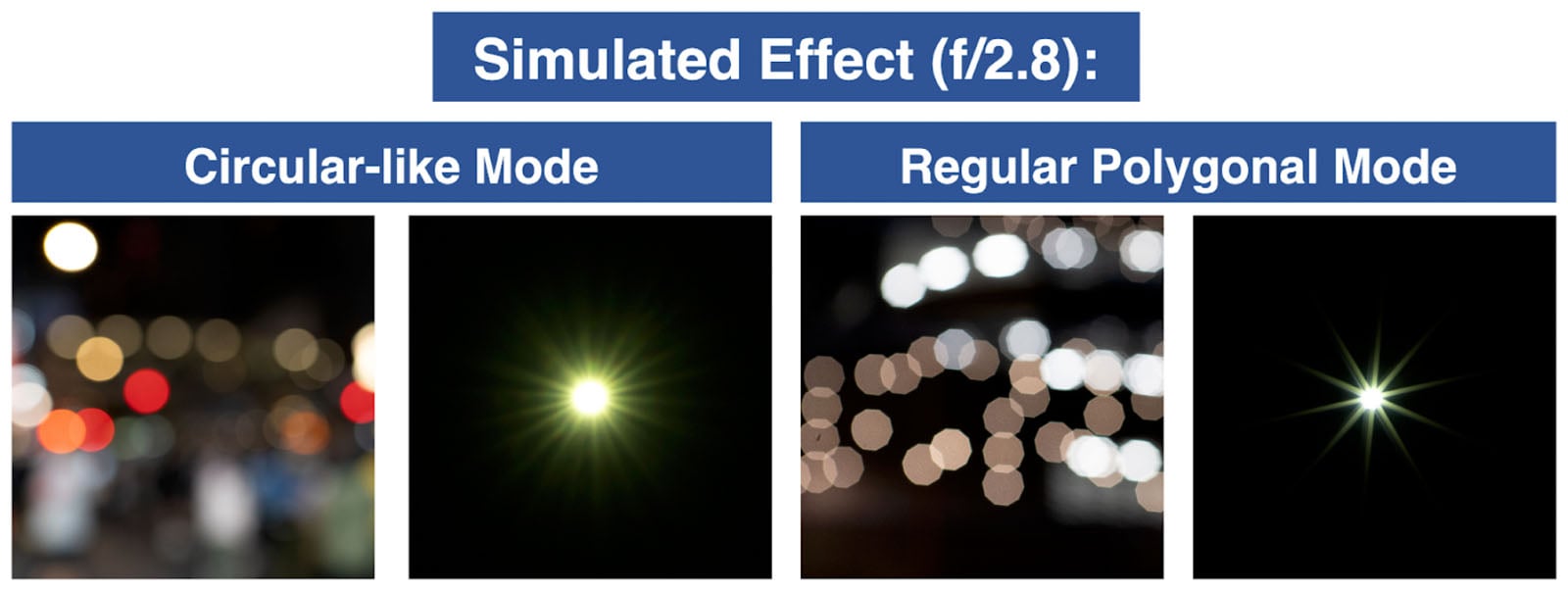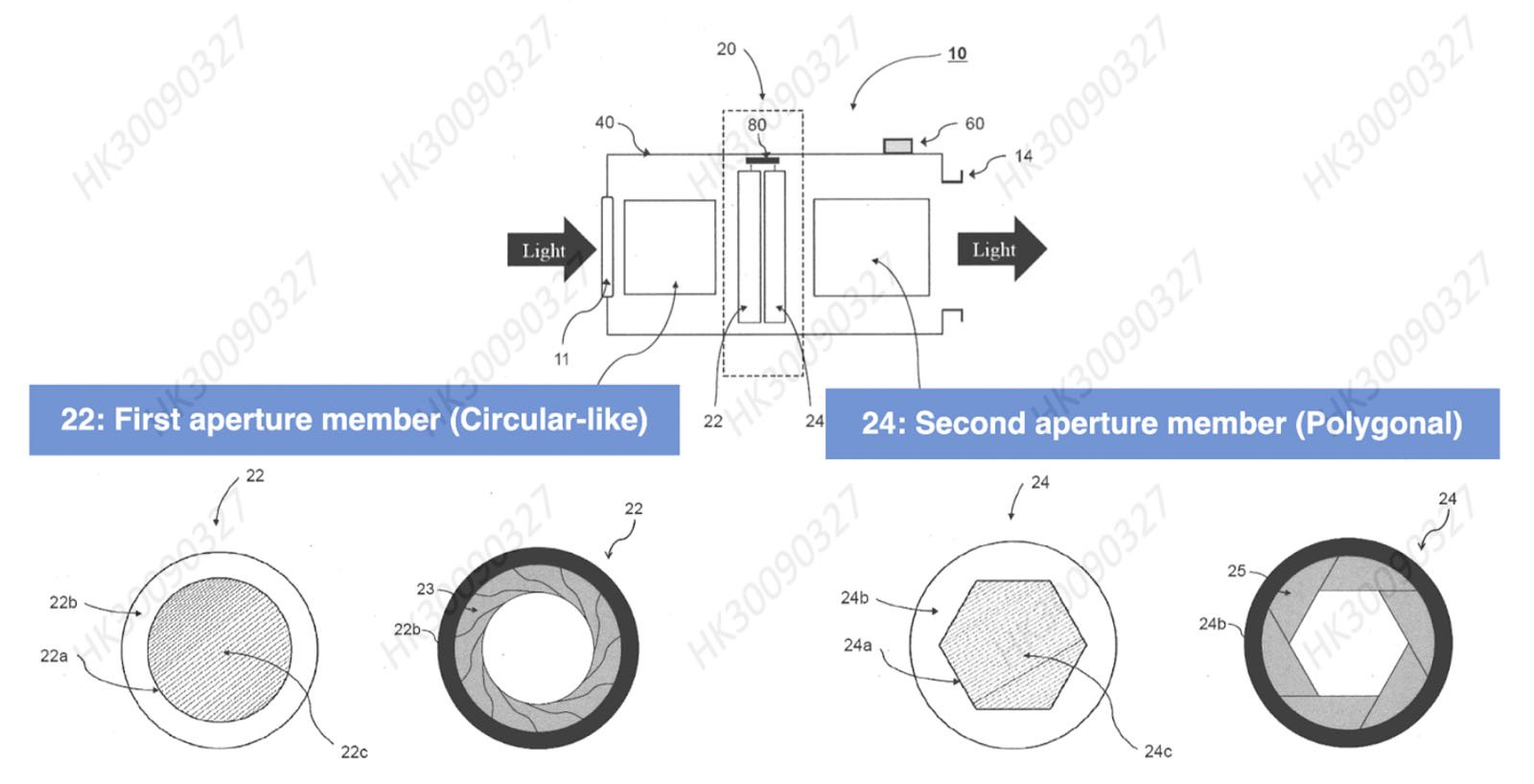![]()
Hong Kong-based inventor Chan Yuk Sum has patented a clever dual aperture mechanism that allows photographers to achieve the beautiful bokeh effects of a circular aperture mechanism and the superior Sunstars of a polygonal opening, all in one lens.
The patent details an aperture mechanism that includes two overlapping aperture diaphragms, including one with curved blades (circular aperture opening) and another with straight blades (polygonal). This “allows users to switch between the two and achieve an ideal Sunstar/bokeh effect in imaging,” per Sum.
So far, Chan Yuk Sum has only patented his creation in Hong Kong, although he says he intends to register his work in other regions.
![]()
Light passing through a lens with this dual-aperture mechanism will travel through a selected aperture mechanism before hitting the image sensor. When one diaphragm shape is selected, circular, for example, the second aperture will be fully open so that the light passing through the lens is unaffected.
Consider Chan Yuk Sum’s simulated example below at f/2.8. In this illustrative image, the circular-like aperture mode delivers smooth, rounded out-of-focus elements on the left. On the other hand, while the “regular polygonal mode” on the right is not as good at creating soft, rounded bokeh, it delivers much more pleasing Sunstars.

The idea is compelling, especially as many photographers care a lot about smooth, soft bokeh but would also like to have sharp, pointed Sunstars. However, how could something like this work in a real-world product?
Sum explains that a mode switch with three modes, circular, polygonal, and auto, can be put directly on a lens body. As for the “auto mode,” he writes, “In ‘auto’ mode, curved aperture blades are used when the F-value is larger than a preset threshold (e.g. f/4). Or straight aperture blades are used when a built-in AI software in the camera detects a Sunstar in the composition.”

He continues, saying that this dual aperture mechanism could theoretically work for any lens. However, it has the most potential benefit for fast prime lenses, “especially wide angle primes, where bokeh and Sunstars are important to the composition.”
The most notable potential downside to the dual aperture mechanism includes the necessity for an additional aperture blade mechanism, which will undoubtedly make lenses heavier.
The creator says that he is currently reaching out to camera manufacturers to negotiate the sale of the patent, adding that “There is a certain chance this dual aperture mechanism will be used in camera lenses.”
It is a fascinating patent, and it will be interesting to see if a dual aperture mechanism makes its way into future lenses.
Image credits: Images courtesy of Chan Yuk Sum. Header photo licensed via Depositphotos.
